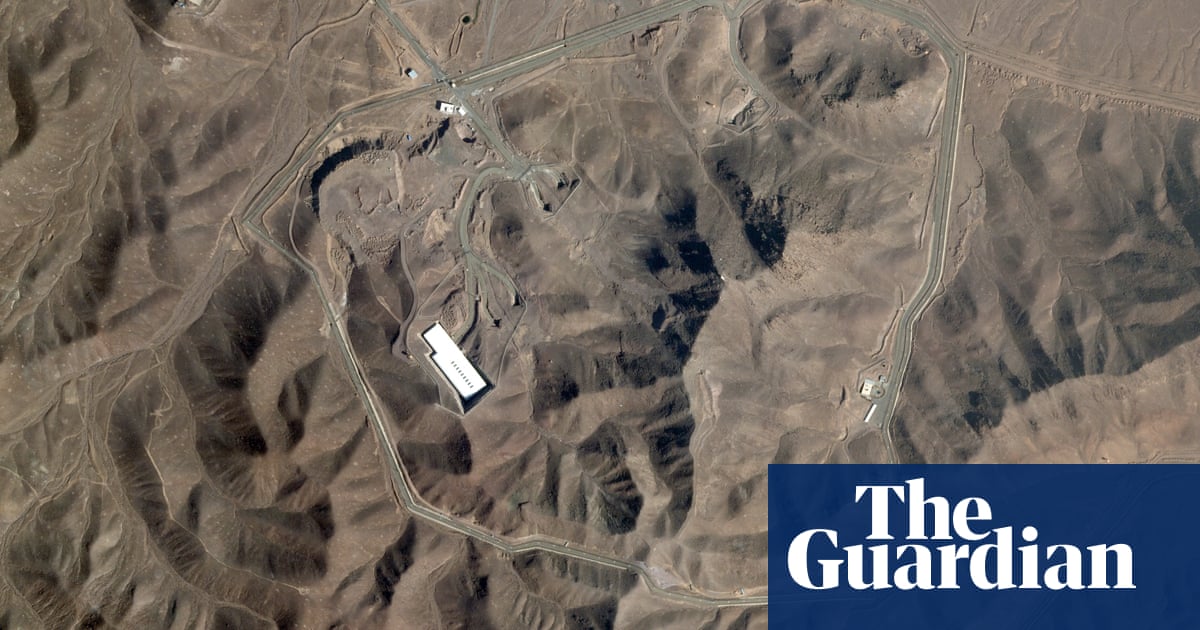PresidentDonald Trumpon Saturday said that a US attack on Iran’s three principal nuclear sites: Natanz, Isfahan and Fordow had led to the “obliteration” of its key enrichment facilities. Later Iranian media acknowledged part of the Fordow site had been “attacked by enemy strikes”.
“Everybody heard those names for years as they built this horrible destructive enterprise. Our objective was the destruction of Iran’s nuclear enrichment facility,” said Trump on Saturday night. “The strikes were a spectacular military success.”
The decision to directly involve the US comes after more than a week of strikes byIsraelon Iran that have moved to systematically eradicate the country’s air defences and offensive missile capabilities, while damaging its nuclear enrichment facilities.
Buried under a mountain and protected by anti-aircraft batteries, the Fordow nuclear fuel enrichment plant appears designed to withstand airstrikes. Taking Fordow offline – either diplomatically or militarily – is seen as central to prevent Iran from acquiring nuclear weapons after the International Atomic Energy Agency (IAEA) found the site hadenriched uranium to 83.7%– close to the 90% needed for nuclear weapons.
Israel hasappealed to Trump for US bunker-busting bombs, the 30,000lb GBU-57 Massive Ordnance Penetrator, which uses its weight and sheer kinetic force to reach deeply buried targets and then explode. It can be delivered only by the B-2 stealth bomber, which is only found in the American arsenal.
After the strikes, Benjamin Netanyahu praised Trump’s move, adding that the “awesome and righteous might of the United States will change history”. The Israeli prime minister said in a video address, the US “has done what no other country on Earth could do”.
In turn, Trump thanked Netanyahu, saying they “worked as a team like perhaps no team has ever worked before”, and gone a long way towards “erasing this horrible threat to Israel”.
The bomb carries a conventional warhead, and is believed to be able to penetrate about 200ft (61 metres) below the surface before exploding, and the bombs can be dropped one after another, effectively drilling deeper and deeper with each successive blast.
A US official told Reuters that B-2 bombers were involved in the strikes on Iran’s nuclear sites.
Justin Bronk, an aviation expert with the Royal United Services Institute (Rusi) thinktank, said “multiple impacts” would almost certainly be required to destroy Fordow, “with the second bomb affecting inside the hole made by the first”.
Though a B-2 can carry two bunker-busting bombs, a serious assault by the US designed to eliminate the facility would probably require the deployment of more than one bomber. Bronk said: “An attack would require redundancy since the weapons have to function and be delivered perfectly to get down into the facility and explode at the right depth to cause critical damage.”
Trump told Fox News six bunker buster bombs were dropped on Fordow, while 30 Tomahawk missiles were fired against other nuclear sites including Natanz.
Natanz, the country’s other principal enrichment site, was attacked by Israel at the start of its campaign. Diplomats with knowledge of Natanz describe its underground fuel enrichment plant as being about three floors below ground. There has long been debate about how much damage Israeli airstrikes could do to it.
Last week Donald Trumpsuggested to officialsit would make sense for the US to launch strikes against Iran only if the so-called “bunker buster” bomb was guaranteed to destroy the critical uranium enrichment facility at Fordow, according to people familiar with the deliberations.
Some defence officials has privately warned that using conventional bombs, even as part of a wider strike package of several GBU-57s, would not penetrate deep enough underground and that it would do enough damage only to collapse tunnels and bury it under rubble.
